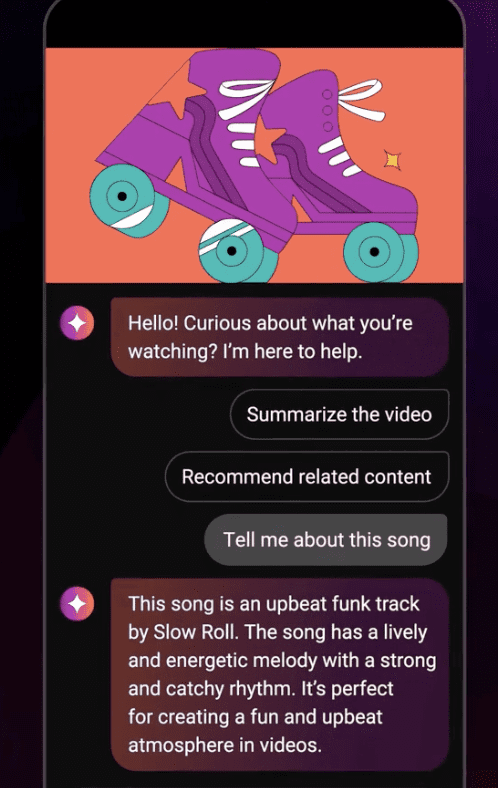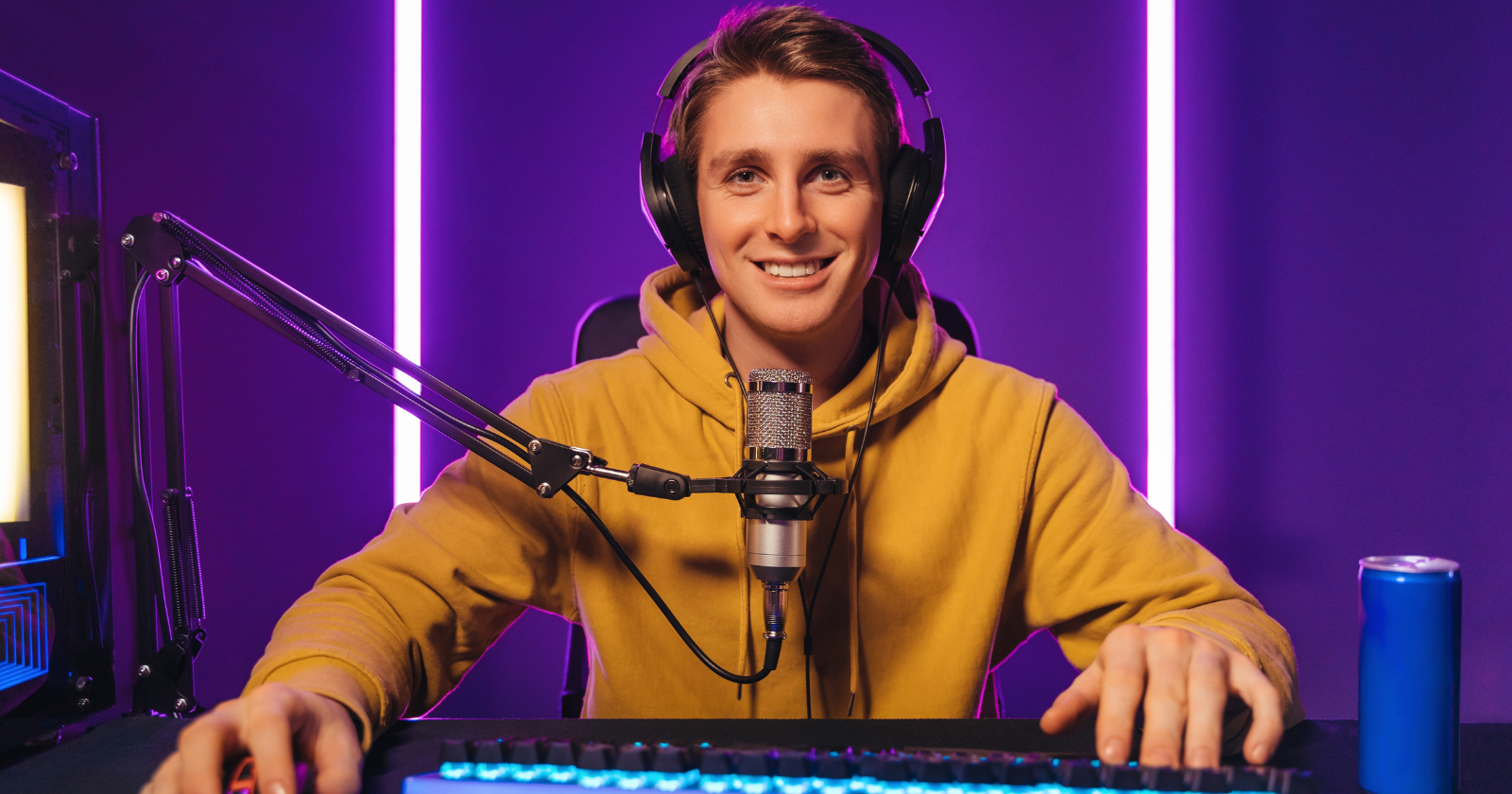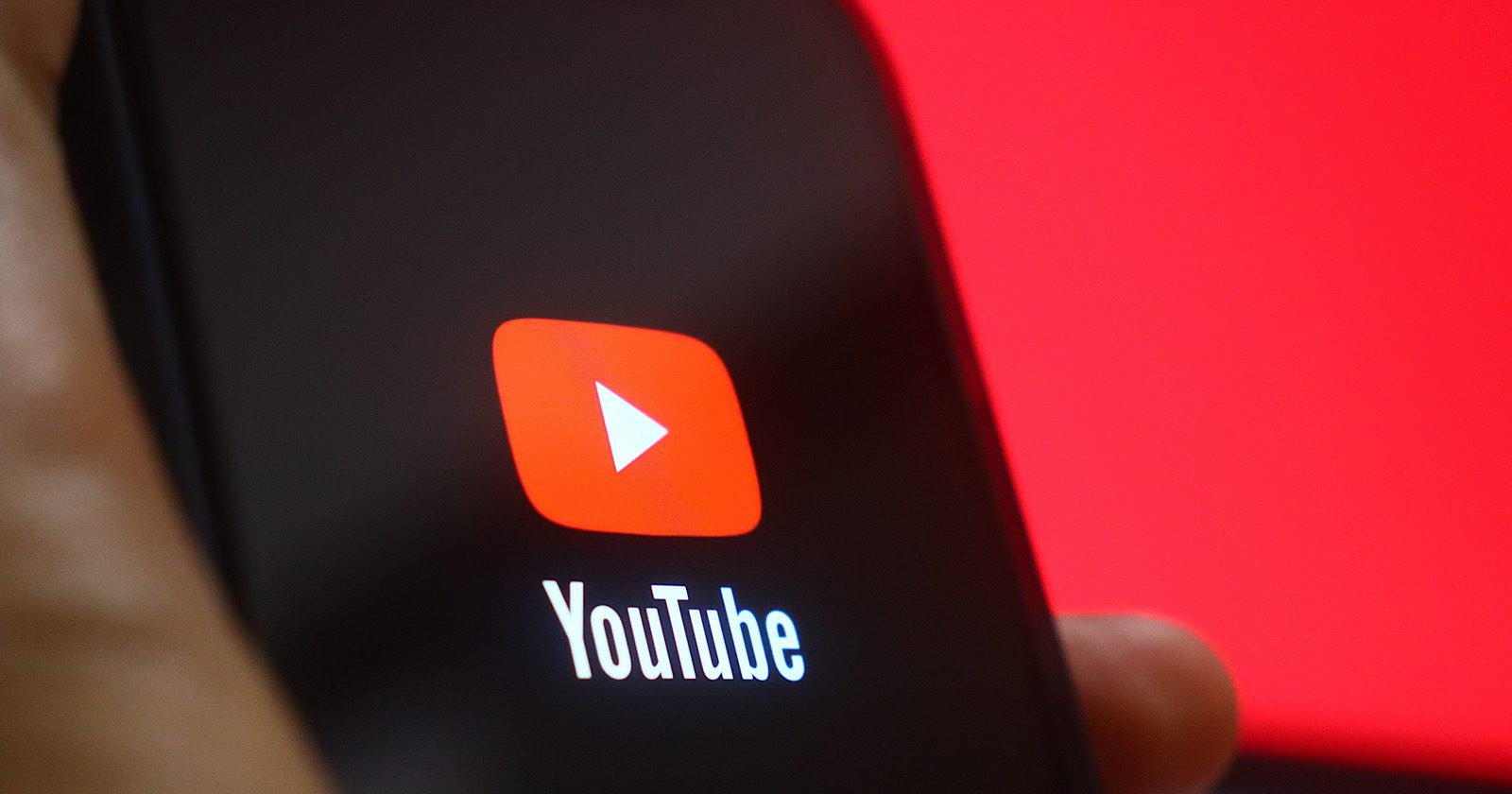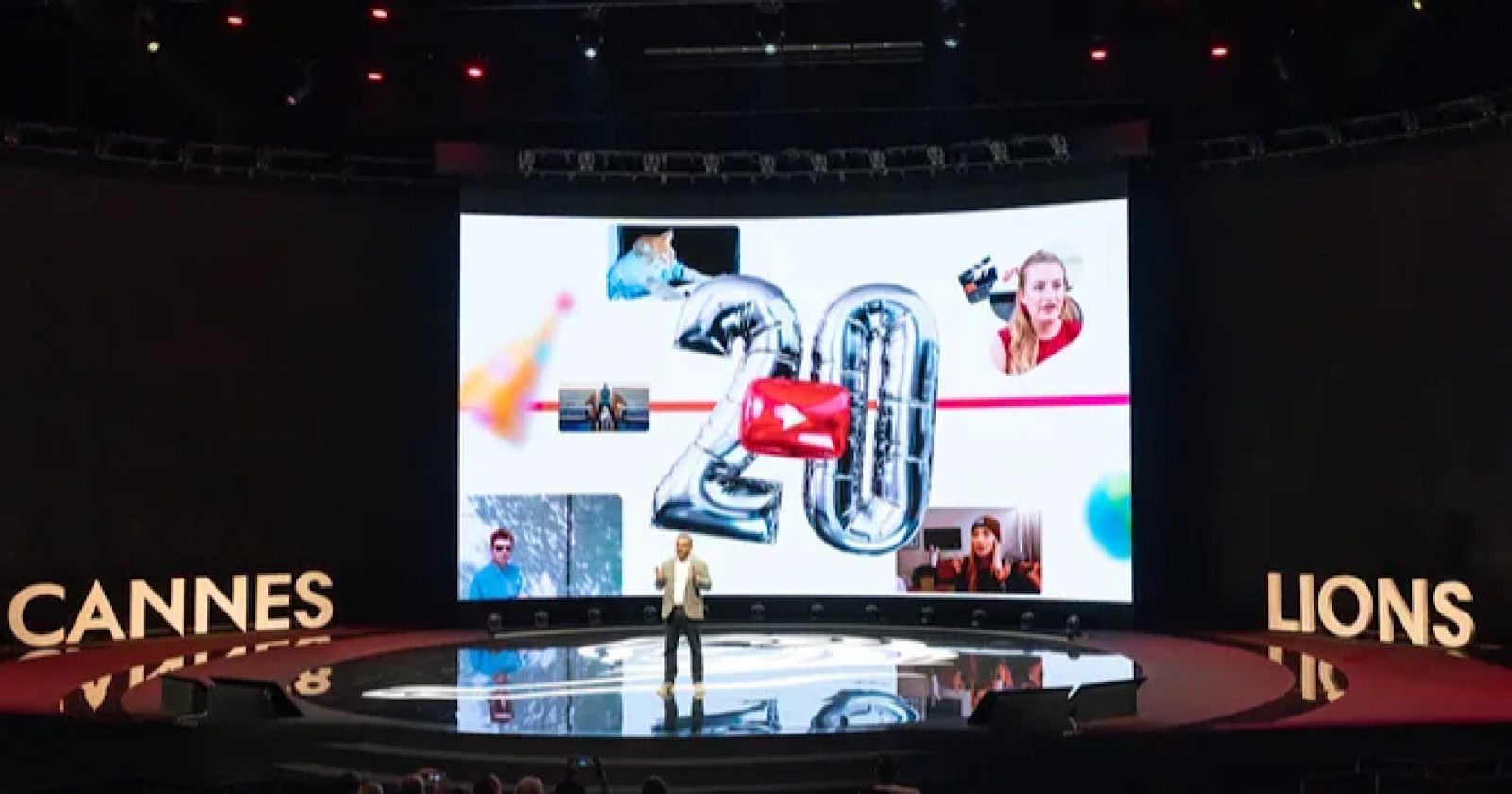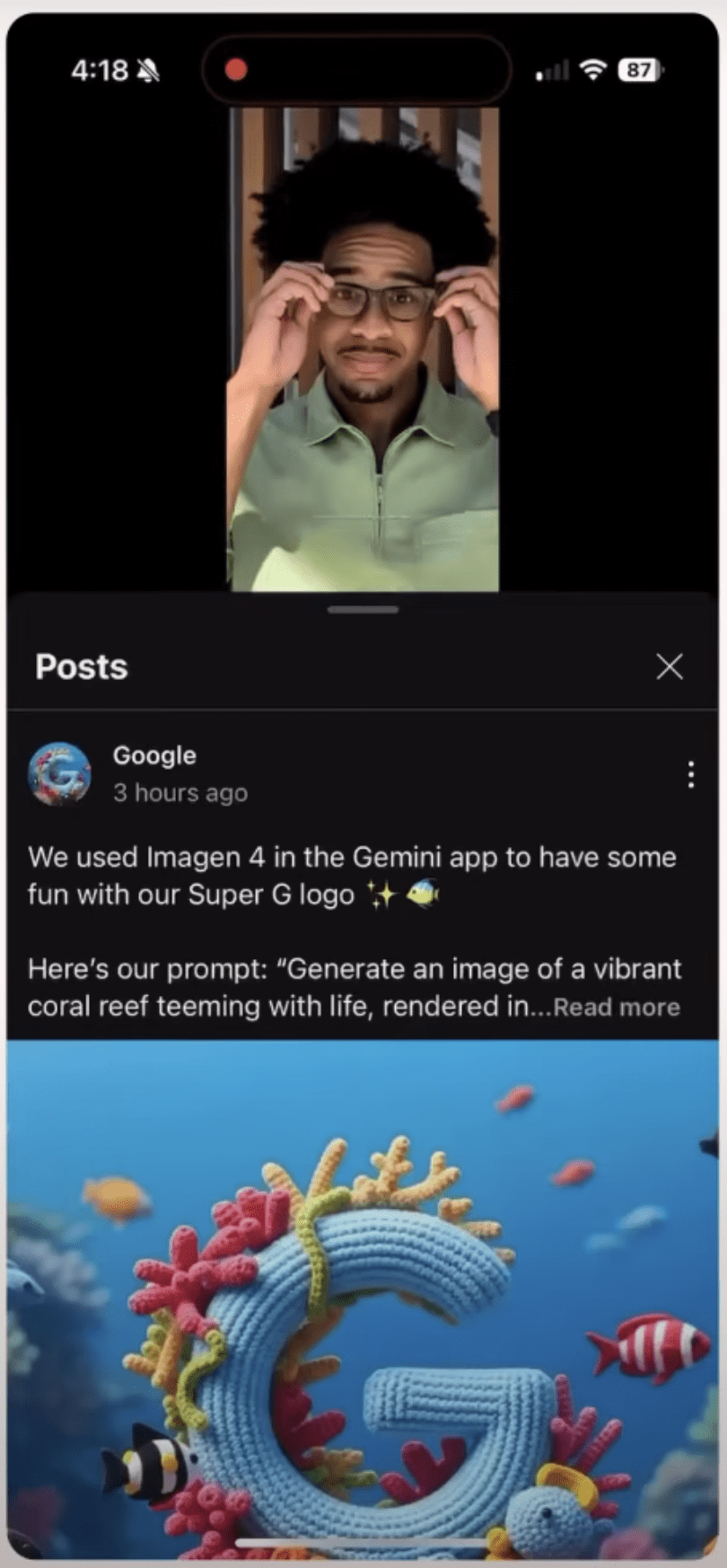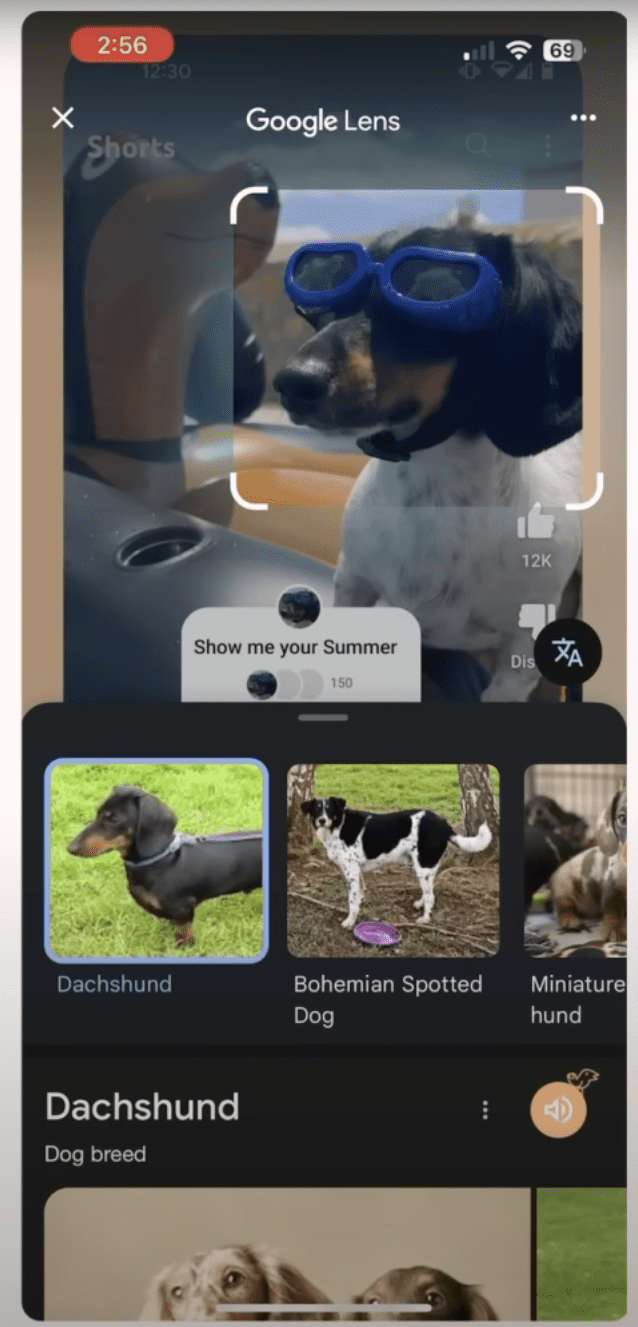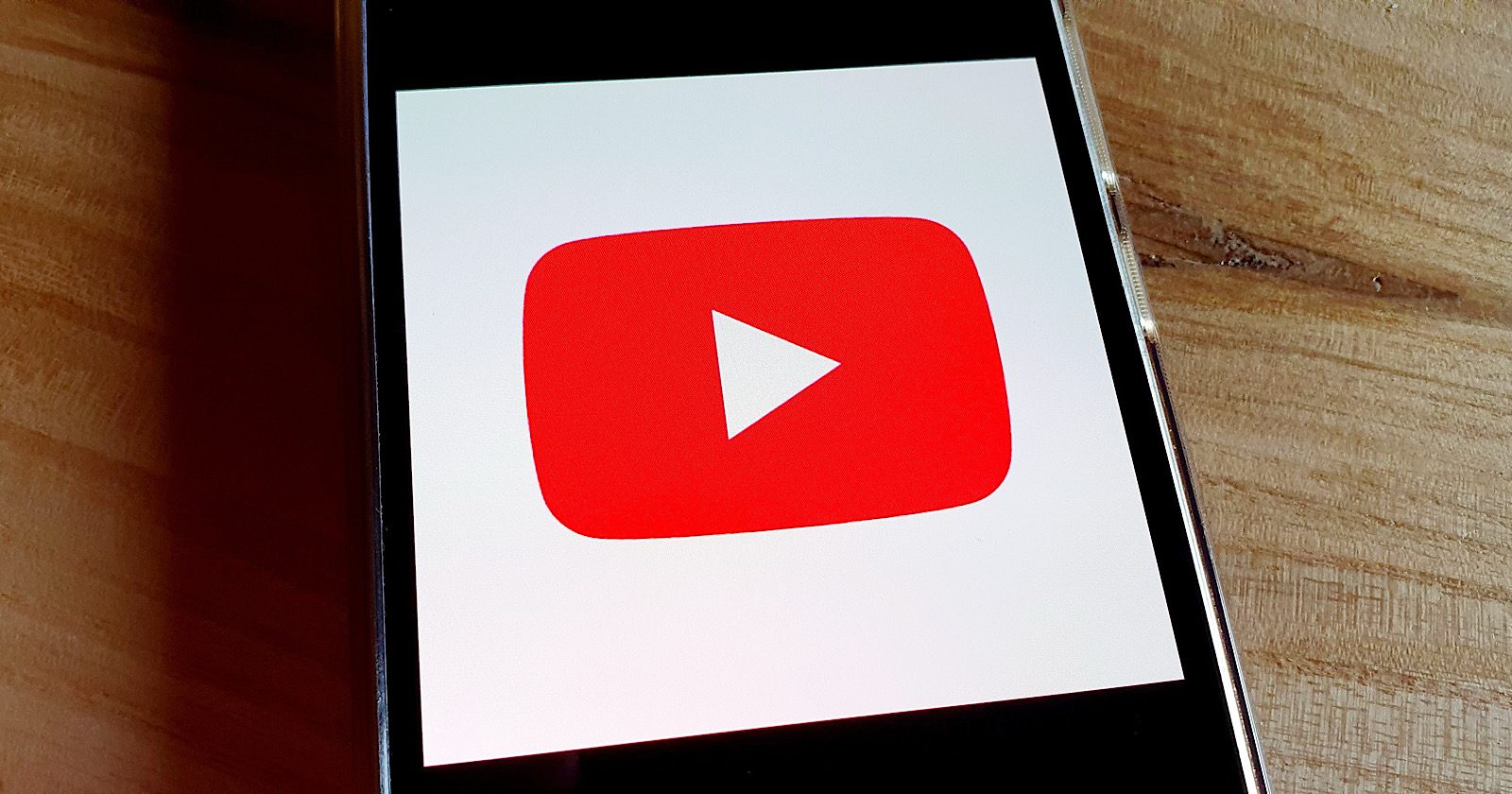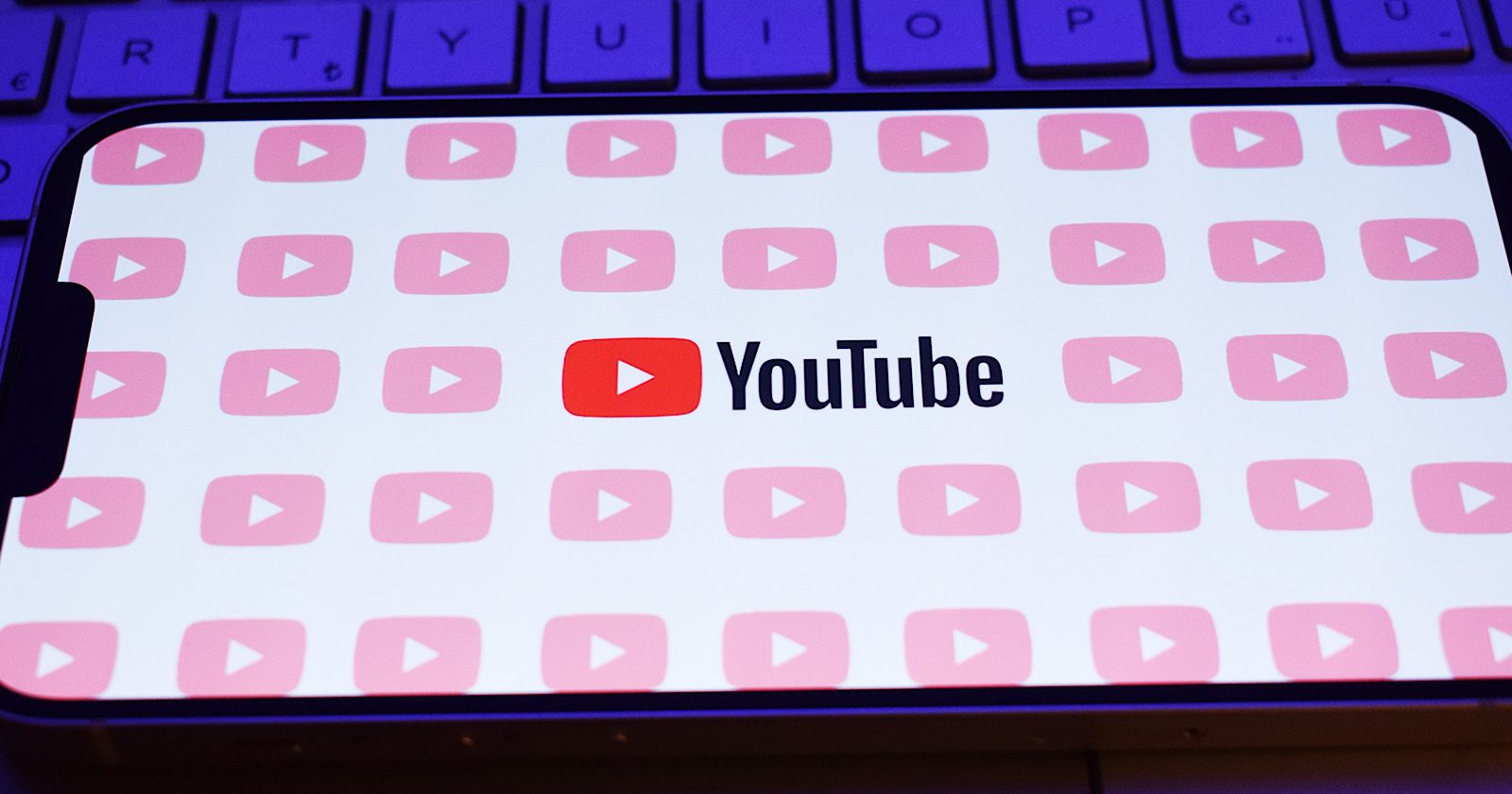Right now, YouTube marketing has become even more important with all the changes happening in the current digital landscape.
What is also important is keeping up with trends and strategies to ensure your marketing stays fresh.
As I said in a previous article, “I learned a long time ago that the video sharing site changes about one-third of its major features every year.”
So, six out of 10 of your best practices for YouTube that worked 21 months ago need to be thoroughly revised.
For this year, here are 10 new YouTube marketing strategies – along with the latest tips, recent case studies, and fresh examples – that you should use while they’re at their peak in terms of effectiveness.
1. Identify Your Target Audience
YouTube still tells creators:
“Our algorithm doesn’t pay attention to videos, it pays attention to viewers. So, rather than trying to make videos that’ll make an algorithm happy, focus on making videos that make your viewers happy.”
This means that market segmentation, dividing an audience into smaller groups with similar characteristics, remains crucial for effective YouTube marketing.
What’s new about this strategy? Instead of only using demographics to segment audiences, brands should also focus on reaching, engaging, and retaining groups of people with specific interests and intents.
Tactical Advice
The Audience tab in YouTube Analytics provides detailed information about your viewers, including demographics, viewing frequency, and traffic sources.
Understanding this data can help you create content that better resonates with your audience and increases engagement.
Latest Tip
Read everything you can about audience research – its definition, importance, distinction from market research, current trends, different research methods, and strategies for long-term effectiveness.
Example
According to Tubular Intelligence, Red Bull uploaded 8,016 videos in 2024 to 49 YouTube channels with different target audiences in 16 different countries.
The brand’s videos got a total of 9.2 billion views on YouTube last year.
“Playing This On Loop,” which was uploaded on April 26, 2024, was Red Bull’s most-viewed video, with 467 million views.
Fresh Example
According to Tubular Intelligence, Hasbro uploaded 7,064 videos in January 2025 to 114 different YouTube channels, with different target audiences in 27 countries.
The brand’s videos got a total of 2.2 billion views on YouTube that month.
“Peppa Pig Tales,” uploaded Jan. 17, 2025, was Hasbro’s most-viewed video, with 6.1 million views.
2. Create High-Quality Video Content
YouTube still tells the press, “More than 500 hours of content are uploaded to YouTube every minute.”
Viewers choose what they want to watch based on age-old desires: to feel informed, entertained, connected, or relaxed – but they also want to see high-quality video content.
So, a difference in “quality” is what makes viewers feel that their time was wasted or well spent.
This consumer insight calls for an updated content strategy. Why? High-quality video requires a fresh blend of technical skill and emotional connection.
For example, a Google and MTM survey of 12,000 video viewers in Europe, the Middle East, and Africa found that viewers expect clear visuals, good audio, and proficient editing, but they also value content that evokes emotions, feels relevant, and holds personal meaning.
While 4 of 5 viewers judge quality based on whether they feel their time was well spent, 9 of 10 believe both technical and emotional aspects are crucial.
Tactical Advice
This means you should focus on creating high-quality video content that:
- Has clear visuals and good audio: High-quality video production requires technical expertise, shown through excellent camera work, editing, and visual presentation, and should include unique features to stand out from typical content.
- Captures viewer attention throughout: Maintaining viewer attention throughout a YouTube video is essential for maximizing watch time, which in turn boosts engagement, improves audience retention, and drives increased views and channel growth.
- Is relevant to viewer interests: Audiences are varied and can be segmented by shared interests, purchase intentions, and demographics, including groups driven by passion, life events, or active purchasing.
Latest Tip
If you’re targeting users aged 18-34 years old, then high-quality video content must also:
- Be original or creative: YouTube success hinges on creating unique and inventive video content that stands out, captures attention, encourages engagement, builds a loyal audience, and increases visibility and popularity.
- Teach them something new or useful: YouTube’s popularity is driven by its educational value, making highly effective videos that teach viewers something valuable.
However, if you’re targeting users aged 35 years old and above, then high-quality video content should also:
- Provide accurate or trustworthy information: Providing accurate and trustworthy information on YouTube is vital due to its role as a major information source, as inaccurate or misleading content can spread misinformation and promote harmful behaviors.
- Tell a compelling story: A compelling narrative is crucial for YouTube videos. It increases viewer engagement, encourages full viewing, promotes sharing, and improves information retention.
Example
As I pointed out previously, Teleflora’s “The Power of Wishes” campaign, featuring a hospitalized boy and a magical snowman, was the most emotionally engaging holiday ad of 2024.
Created by The Wonderful Agency, the ad aimed to inspire donations for children with critical illnesses, and it elicited an intense positive reaction from 57.1% of viewers, placing it at the top of DAIVID’s Holiday Ads Chart.
Fresh Example
“Don’t Eat Lava” from Reeses was the most mouthwatering ad from Super Bowl LIX, according to data from DAIVID.
The 30-second Reese’s ad, depicting people comically attempting to eat lava due to their love for the new Chocolate Lava Big Cup, was found to be three times more effective at triggering viewers’ cravings compared to the average U.S. response.
3. Generate More YouTube Shorts
The social video platform also tells the press, “YouTube Shorts is now averaging over 70 billion daily views.”
In addition, YouTube’s short-form video experience is “clocking in billions of monthly logged-in users,” significantly more than Instagram or TikTok.
This means you need to master YouTube’s short-form video experience – even if you want to continue creating longer-form content or using other social video platforms.
Tactical Advice
To create effective YouTube Shorts, you should always tailor your content to your target audience, as well as ensure that your audio is clear and engaging.
But, if your marketing goal is to capture attention and build brand awareness, then:
- Grab attention instantly: Use strong visuals, questions, or trending audio in the first few seconds.
- Keep it short and engaging: Tell a concise story with visuals and text overlays.
- Show, don’t just tell: Demonstrate your product or service.
- Use trends and hashtags: Participate in challenges and use relevant hashtags.
- Build brand personality: Infuse your brand’s voice and style.
- Post consistently: Maintain a regular posting schedule.
- Cross-promote: Share your shorts on other platforms.
But, if your business objective is to increase website traffic, leads, or sales, then:
- Show product demos and tutorials: Highlight key features and benefits.
- Offer value and incentives: Provide discounts or free resources.
- Include a clear call to action (CTA): Tell viewers what to do next.
- Drive traffic to landing pages: Create optimized landing pages.
- Generate Leads: Use short-form content to drive users to provide more information.
- Use shoppable features (if available): Enable direct purchases.
- Analyze performance: Use YouTube Analytics to optimize your content.
Latest Tip
To create short-form content from existing long-form YouTube videos, go to the watch page of your video on the YouTube app, click “Remix,” then select “Edit into a Short” to choose a specific segment of your video.
Then, add any necessary text, filters, or other creative elements before uploading as a YouTube Short.
This allows you to extract the most impactful moments from your longer video to create a concise clip optimized for the short-form format.
Example
Corona aimed to increase awareness and ticket sales for its Cape Town Sunsets Festival by utilizing a digital video strategy focused on reaching music and beer lovers.
It achieved this by creating short-form videos, particularly on YouTube Shorts, which evoked the feeling of a sunset and featured popular South African musicians.
After testing various ad formats, it found this approach to be the most effective, resulting in 1.3 million views within a month and a 21.2% video completion rate.
Fresh Example
According to Tubular Insights, McDonald’s uploaded 172 videos to 38 YouTube channels in 37 countries around the world in the last 90 days, which got a total of 167 million views and 3.1 million engagements (e.g., likes, comments, shares).
And it’s worth noting that 160 of the fast-food brand’s videos uploaded during this period were Shorts, which got a total of 127 million views and 2.9 million engagements.
The most watched and engaged of this fresh batch of Shorts was “New McCrispy, the sound of joy,” which was uploaded to the McDonald’s UAE channel on Dec. 23, 2024.
Today, it has 19.3 million views and 447,000 engagements.
4. Produce More Content For TV
In February, Neal Mohan, CEO of YouTube, announced:
“TV has surpassed mobile and is now the primary device for YouTube viewing in the U.S. (by watch time), and according to Nielsen, YouTube has been #1 in streaming watch time in the U.S. for two years.”
Mohan added, “The ‘new’ television doesn’t look like the ‘old’ television. It’s interactive and includes things like Shorts (yes, people watch them on TVs), podcasts, and live streams, right alongside the sports, sitcoms and talk shows people already love.”
This means you should start producing more passive “lean back” content for relaxed viewing as well as continuing to create interactive “lean forward” content for engaged participation.
Tactical Advice
With viewers now watching, on average, over 1 billion hours of YouTube content on TVs daily, how do you produce more high-quality video content for the big screen?
Recognizing the growing trend of creators developing content specifically for television screens, YouTube is enhancing its TV platform with innovative features.
This includes a second-screen experience that enables viewers to interact with the content on their television using their smartphones, facilitating actions like leaving comments or making purchases.
YouTube is also experimenting with a feature called “Watch With,” which allows creators to provide live commentary and real-time reactions to events like sports games.
Initially tested with the NFL, this feature will expand to other sports and content types.
So, while YouTube is actively reshaping the television experience for a new generation of viewers, you should use the test-and-learn approach to evaluate innovative features and diverse content, as well as analyze the results.
Latest Tip
Doing this successfully requires a change in roles and responsibilities. You must now play the role of a “showrunner,” taking full creative leadership of this project.
This entails managing all creative elements, directing the team of writers, directors, and actors, and making critical narrative decisions to maintain a consistent vision throughout the entire production process.
Example
Sports content on YouTube experienced a significant surge in TV viewership in 2024, with watchtime increasing by over 30%.
For example, “Saquon Barkley wanted the young guys to play #shorts,” which was uploaded by the Philadelphia Eagles on Oct. 21, 2024, got 11.7 million views and 574,000 engagements.
Fresh Example
Kylie Kelce launched a video podcast, Not Gonna Lie with Kylie Kelce, on Nov. 25, 2024, where she addresses rumors and discusses women, sports, and motherhood.
Today, her YouTube channel has 6.6 million views, 267,000 engagements, and 291,000 subscribers.
5. Propose A Branded Podcast
On Feb. 26, 2025, YouTube announced that “there are more than 1 billion monthly active viewers of podcast content on YouTube.”
This milestone also makes YouTube the most frequently used service for listening to podcasts in the U.S.
Branded podcasts are a terrific way for brands and organizations to market their products and services.
YouTube’s podcast platform simplifies discovery and consumption, making it a popular starting point for finding new podcasts.
So, if your brand doesn’t already have a podcast yet, then this is the right time to propose one – and YouTube is the right place to host it.
Tactical Advice
Before pitching your idea to executives, start by watching and listening to 10 of the best branded podcasts on YouTube. These include:
- The A.B.C.Dior podcast series illustrated by Christian Dior, which examines and explains the codes that shape the house of Dior.
- AI at Scale podcast by Schneider Electric, which invites all AI practitioners and AI experts to share their experiences, challenges, and AI success stories.
- Behind The Tech with Kevin Scott by Microsoft, which goes behind-the-scenes with today’s most innovative tech leaders.
- eBay Seller Spotlight Podcast by eBay for Business, which explores the challenges faced, the obstacles overcome, and the insights hard-won by some of their top sellers.
- GreenFlags Podcast by PUMA, which explores sustainability and how everyday choices can reduce climate change.
- The McKinsey Podcast by McKinsey & Company, which features conversations with experts on issues that matter most in business and management.
- REAL TIME Podcast by the Canadian Real Estate Association (CREA_, which brings realtors inspiring insights on all things Canadian real estate.
- Search Off the Record Podcast by Google Search Central, which takes you behind the scenes of Google Search and its inner workings.
- Talent All-Stars by ZipRecruiter, which features interviews with talent leaders from influential businesses.
- Wild Ideas Worth Living Podcast by REI, which features high-impact interviews for those who love adventure and the outdoors.
Latest Tip
Instead of directly pushing products, build a loyal niche community by offering valuable, related expertise and fostering authentic engagement on YouTube.
Example
Black Kitchen Series by Heinz collaborated with the LEE Initiative, Southern Restaurants for Racial Justice (SRRJ), and more than 60 Black-owned restaurants across the country to identify six Black-owned restaurants that have been instrumental in shaping the foods and flavors we enjoy today.
It won the 2024 Webby Award for Best Branded Podcast or Segment.
Fresh Example
Ninjas are Butterflies is a wildly funny podcast hosted by Josh Hooper and Andy DeNoon.
Produced by Sunday Cool, a small custom apparel company, it delivers a mix of bizarre stories, over-the-top conspiracy theories, and plenty of laughs, guaranteeing a rollercoaster of emotions each day.
In the last 90 days, Ninjas Are Butterflies has uploaded 46 episodes to YouTube, which have received a total of 2.6 million views and 118,000 engagements.
For a short sample of their video podcast, check out “Surviving Snake Wine”
6. Optimize Your Videos For Discovery
New research by Adilo on YouTube search optimization highlights the importance of engagement signals, the effectiveness of 8- to 9-minute video lengths, and the positive impact of channel authority on video visibility.
YouTube’s search and discovery system uses multiple algorithms. So, effective video SEO requires more than just optimizing for YouTube search.
You must also consider factors that influence how videos are presented on the Home feed, in suggested video lists, and within the Shorts feed, ensuring your content reaches the right audience across various platform features.
Tactical Advice
Adilo’s study of 1.6 million videos uncovered 19 key YouTube SEO tactics to maximize search visibility, encourage viewer participation, and increase video viewership:
- Multiple Videos: Create multiple videos for target keywords, as YouTube doesn’t penalize “keyword cannibalization.”
- Engagement: Prioritize channel and video engagement rates, which significantly impact ranking.
- Views: Aim for high video views, as top-ranking videos have a median of 300,000 views.
- Video Length: Keep videos between 8 and 9 minutes (around 536 seconds).
- Descriptions: Write video descriptions that are around 200-250 words.
- Links: Include external links in video descriptions.
- Titles: Focus on matching search intent, not just exact keywords.
- HD Quality: Produce videos in HD or 4K.
- Transcripts: Use keyword-rich video transcripts.
- Closed Captions: Add closed captions and subtitles.
- Timestamps: Add timestamps for better navigation.
- Custom Thumbnails: Use custom thumbnails.
- Hashtags: Hashtags are optional but can help.
- Patience: Older videos and channels tend to rank better.
- Verification: Channel verification has a moderate impact.
- Brand Channels: Brand channels rank better than personal channels.
- Channel Links: Include website and social media links in channel descriptions.
- Subscribers: Aim for more subscribers, but low subscriber counts don’t eliminate chances to rank.
- Location: Setting your channel location to the U.S. can improve ranking.
Latest Tip
To increase YouTube video visibility, don’t rely solely on the platform.
Embedding videos on relevant websites and blogs adds context and directs traffic. Sharing on social media expands reach and audience engagement.
Using email marketing fosters immediate viewership. Adding videos to press releases increases open rates, views, engagement, and shares.
Example
On Sept. 17, 2024, Gillette India uploaded “Ab fikar kyu when you’ve got Gillette Guard that looks out for you?” This noteworthy video got 46.9 million views and 370,000 engagements.
According to Tubular Intelligence, that’s more than expected given the brand’s follower count, and it didn’t get views primarily from advertising.
Engagement signals played a significantly bigger role in this YouTube Short’s success than optimized metadata.
Fresh Example
On Jan. 14, 2025, Oreo India uploaded “New Oreo Pokémon. Twist, lick, and play with ’em all! #PlayWithOreoPokémon.”
Now, there are optimized keywords and a hashtag in the title and description of this noteworthy video.
But, this YouTube Short got 7.6 million views and 431,000 engagements because the high-quality video content also told parents with kids to grab the new Oreo Pokémon pack, collect all 16 Pokémon, and get a chance to win a trip to Japan.
7. Promote Your Shorts
In February 2025, YouTube announced that creators (and brands) can now promote their Shorts directly in YouTube Studio with a “Promote” button.
Plus, their “promoted videos will be automatically shown to viewers who are more likely to engage with the promoted channel.”
A decade ago, the “YouTube Creator Playbook for Brands” urged marketers to “leverage paid video advertising to put your content in front of the right audience.”
Back then, only a few brands adopted this cost-effective strategy. But, with YouTube Shorts now averaging over 70 billion daily views, both big brands and small businesses should give this option a second look.
Tactical Advice
YouTube’s new “Promote” button in YouTube Studio allows brands to easily launch ad campaigns for Shorts, automatically targeting likely engagers.
Brands should first define clear campaign objectives like brand awareness, product promotion, or audience growth.
Optimizing Shorts with strong hooks, high production quality, relevant keywords, and clear CTAs is crucial.
Trust YouTube’s automated targeting while monitoring performance and refining based on metrics.
Start with a small budget, set clear goals, and A/B test different Shorts to maximize effectiveness.
Integrate Shorts into the overall marketing strategy by cross-promoting and coordinating with other campaigns and actively engaging with the audience.
To use the button, access YouTube Studio, select the Short, click “Promote,” set the budget and duration, review, and launch, then consistently monitor performance.
Latest Tip
On top of regular channel growth and organic discovery, the “Promote” button can get your Shorts as well as your long-form videos in front of new audiences – helping you and your business reach your goals.
Example
Although it’s too soon for case studies, check out the Product Link in the Bio video below to find creative inspiration.
Mavigadget, a product discovery platform, uploaded this Short to YouTube on May 29, 2024. Today, its noteworthy video has 625 million views and 9.4 million engagements.
Fresh Example
Moody Gardens, a public, non-profit educational destination utilizing nature in the advancement of rehabilitation, conservation, recreation, and research, uploaded “Marley the Penguin Making Art with Janie” on Dec. 9, 2024.
This noteworthy video already has 51.3 million views and 2.3 million engagements. They could even afford to promote their Shorts.
8. Test Artificial Intelligence Tools
In February 2025, Google Rolled Out ‘Veo 2’ Video Generation For YouTube Shorts.
This upgrade integrated Veo 2, Google DeepMind’s newest video generation model, into Dream Screen, YouTube’s feature that lets you generate unique AI backgrounds for your Shorts with just a text prompt.
As Mohan said two days earlier, one of YouTube’s big bets for 2025 is investing in AI tools that will “make it easier to create and enhance the YouTube experience for everyone.”
While brands will be tempted to adopt AI tools that improve their efficiency, they should also analyze their results and evaluate if the high-quality video content that AI helps them create is effective.
Tactical Advice
While AI’s creative potential is acknowledged, you should focus on adopting practical AI tools that assist your brand’s high-quality content creators with routine tasks. This includes generating video ideas, titles, and thumbnails.
In addition, AI is already being used to expand audience reach through automatic dubbing, with ongoing improvements and language expansion expected soon.
Crucially, YouTube prioritizes safety by developing tools that allow creators to detect and control AI-generated depictions of themselves, with a pilot program involving influential figures to refine these safeguards.
All these developments provide yet another reason to use the test-and-learn approach to evaluate innovative features and diverse content.
Latest Tip
To increase the effectiveness of your high-quality video content, don’t rely solely on YouTube.
For example, AI software can instantly predict a video’s effectiveness by analyzing emotions, replacing costly audience panels, and providing optimization insights.
Example
As I explained about how Coca-Cola failed to engage viewers with their AI holiday campaign, none of the AI-generated holiday ads in 2024 were considered to be impactful holiday campaigns.
The AI ads also failed to recreate the warm connection of the 2020 ad, although Secret Level’s AI version performed better than the others.
Fresh Example
The 2025 Super Bowl was characterized by a strong presence of AI-related content and advertising, earning it the nickname “AI Super Bowl.”
Notably, “Dream Job,” featuring Gemini Live, achieved significant success with 44.6 million views and a 14th-place ranking on the USA Today Ad Meter.
In contrast, “Hey Meta, Who Eats Art?” garnered far fewer views and ranked 44th, while “ChatGPT | The Intelligence Age,” had moderate views but placed near the bottom of the Ad Meter rankings at 53rd.
9. Employ YouTube Influencers
According to the Influencer Marketing Benchmark Report 2025, 57.1% of brands use Instagram, and 51.6% use TikTok for influencer marketing.
Only 36.7% of brands use YouTube, even though it offers engaging short-form video content and significantly greater reach.
If most of your competitors are “leaving money on the table,” then your smartest move is “picking it up” by leveraging both YouTube Shorts and BrandConnect.
Tactical Advice
Focus on effectively using YouTube BrandConnect and Shorts through:
Strategic Creator Partnerships:
- Prioritize niche creators with engaged audiences over sheer follower count.
- Emphasize authentic brand integration, allowing creators creative freedom.
- Build long-term relationships with creators for consistent messaging.
BrandConnect Campaign Optimization:
- Set clear, measurable campaign objectives (SMART).
- Ensure consistent brand identity across all branded content.
- Negotiate fair deals and establish clear expectations with creators.
- Utilize data analytics to track performance and optimize campaigns.
- Track ROI to measure campaign effectiveness.
Latest Tip
YouTube BrandConnect requires creators to have a minimum of 25,000 subscribers.
While engaging mega-influencers with over a million followers might seem appealing, it can be expensive and lead to less targeted audiences.
So, prioritize working with micro, mid-tier, and macro-influencers who possess subscriber counts between 25,000 and 1 million.
Example
In 2024, Urban Decay successfully used YouTube Shorts with creators like Kelly Strack and Ashley LaMarca to promote their Naked eyeshadow palette.
This strategy resulted in a 278% increase in searches and a 3% rise in purchase intent, exceeding L’Oréal USA’s benchmarks.
The 15-second Shorts, like the one featuring Kelly Strack, directly engaged Urban Decay’s audience.
Fresh Example
In the last 90 days, Great Stuff, DuPont’s insulating foam sealant brand, partnered with two influencers to create three YouTube Shorts, which got 16.8 million views and 935,000 engagements.
One of the Shorts, “We Fix a Drafty Window”, garnered 10.8 million views and 681,000 engagements.
10. Measure Your Results
Google Analytics 4 enables brands to track engaged-view key events – users who watch at least 10 seconds of a YouTube video ad and then perform a key action on their site within three days.
But, this feature is limited to YouTube video ads and doesn’t extend to Organic Video or other default GA4 channels.
Over 90% of people around the world say they discover new brands or products on YouTube.
How do you track or measure this? While YouTube Analytics, Google Ads, and GA4 provide a solid foundation for understanding “what” viewers are doing, they often fall short in revealing the crucial “why.”
Tactical Advice
To bridge this gap and gain a holistic understanding of viewer behavior, you should:
- Go beyond basic metrics with deeper YouTube Analytics exploration: Analyze audience retention for drop-off and re-watch points, scrutinize click-through rate (CTR) and thumbnail performance, and track card/end screen effectiveness. Dive into comment analysis for sentiment and feedback.
- Leverage social listening tools: Supplement this with social listening to monitor brand mentions and industry trends.
- Combine quantitative and qualitative data: Combine quantitative data with qualitative insights through surveys, focus groups, and competitor analysis.
- Integrate data across platforms: Integrate YouTube data with GA4 and your CRM for a holistic view.
- Focus on the “why” behind the “what”: Develop viewer personas to understand motivations, identify content themes, and continuously ask “so what?” to reveal deeper meanings. By focusing on intent and mapping the customer journey, you’ll gain a comprehensive understanding of your viewers, leading to more impactful content.
Latest Tip
Move beyond basic view counts and subscriber numbers.
Use GA4’s event-based tracking and predictive metrics to gain a deeper understanding of viewer behavior and optimize your YouTube strategy for maximum impact.
This focus on event-based tracking, and the predictive nature of GA4, is a very up-to-date way to measure results.
Example
Watch “How Hilton and iProspect maximized results with full-funnel campaigns” to understand the importance of matching the right creative to the right audience, which, in a time of shifting travel behaviors, led to notable increases in awareness, consideration, purchase intent, and booking conversions.
Fresh Example
Cainz Corporation, which has 240 home improvement stores in Japan, used Oriient’s privacy-first tech to track in-store shopper behavior. This data optimizes store layouts, product placement, and promotions.
Watch “JP Cainz Video” to see how this experiment showed a potential 6% sales growth by enhancing in-store experiences.
Keep Up Or Get Left Behind
I hope you take advantage of these 10 strategic insights, new strategies, tactical advice, latest tips, case studies, and fresh examples while they’re at their peak in terms of effectiveness.
In other words, their “Best if Used By” date is today.
To keep up with the latest trends and changes on YouTube and to ensure your strategies are effective, you should read YouTube’s official blog and adapt to algorithm updates, including evolving audience preferences.
If a new video format or feature becomes popular, experiment with it to see if it works for your channel.
Pay attention to emerging trends in video editing, content styles, and audience engagement techniques.
More Resources:
Featured Image: AlessandroBiascioli/Shutterstock
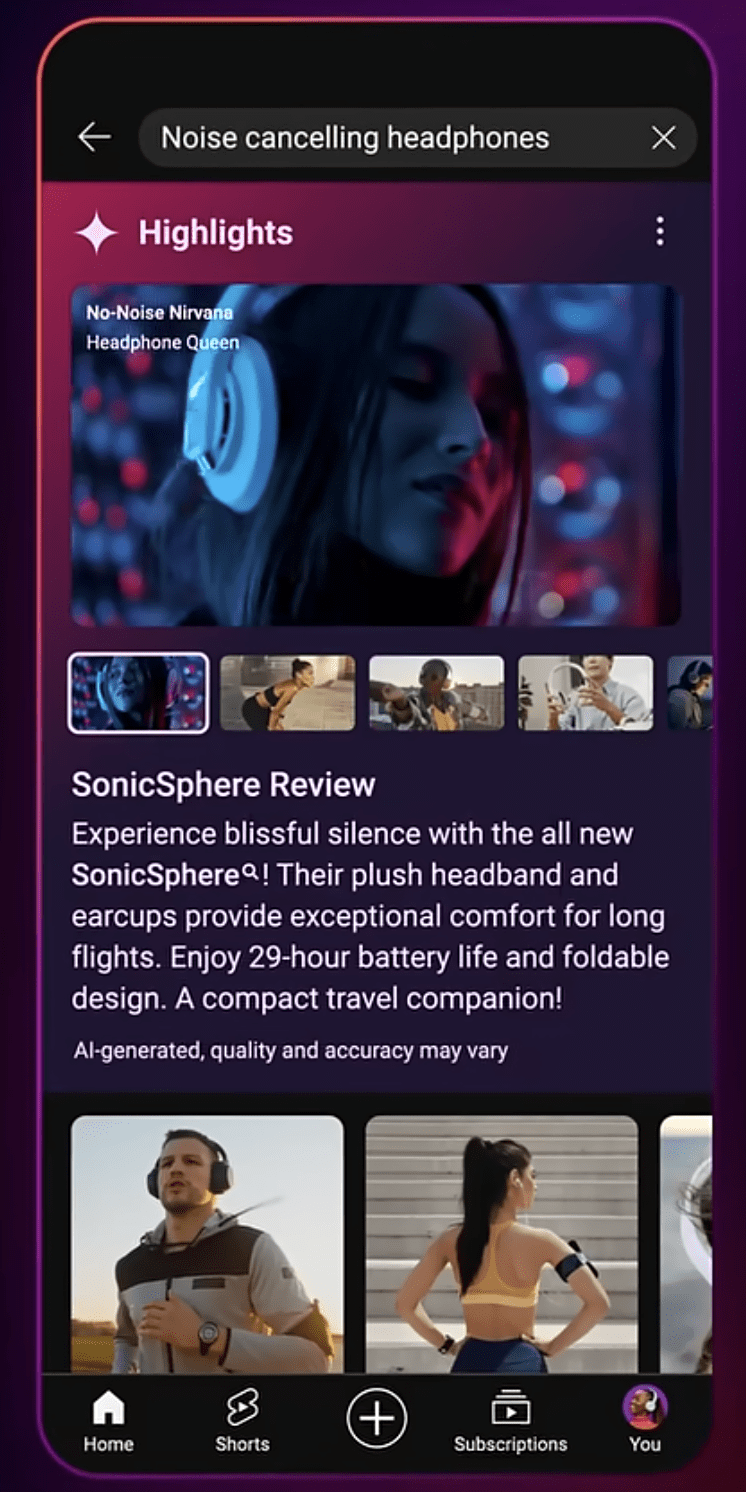 Screenshot from: YouTube, June 2025.
Screenshot from: YouTube, June 2025.